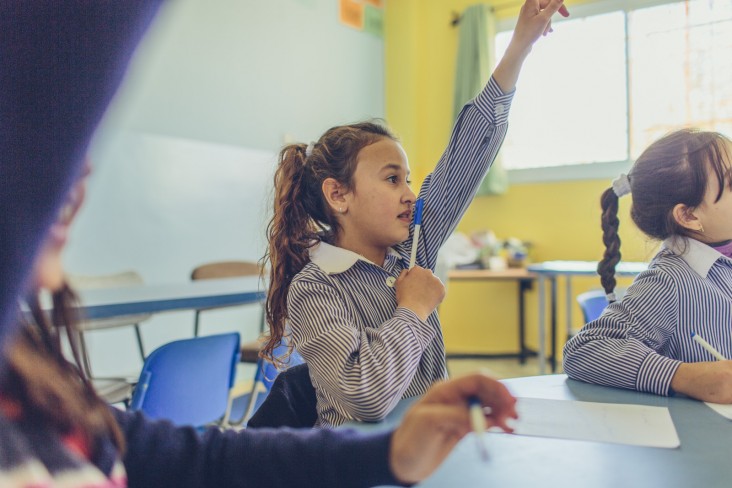- What We Do
- Agriculture and Food Security
- Democracy, Human Rights and Governance
- Economic Growth and Trade
- Education
- Ending Extreme Poverty
- Environment and Global Climate Change
- Gender Equality and Women's Empowerment
- Global Health
- Water and Sanitation
- Working in Crises and Conflict
- U.S. Global Development Lab
Globally, 62 million girls are not in school, and millions more are fighting to stay there. An estimated 100 million will drop out before completing primary school. Girls in developing countries face complex and often dangerous barriers when trying to get an education. Even if they are able to attend school, girls often lack the resources and support they need to learn.
We know advancing girls’ education can unlock human potential on a transformational scale. It’s critical to the global effort to end extreme poverty. An extra year of secondary school for girls can increase their future earnings by 10-20%. Research even shows that investing in women and girls can boost an entire country’s GDP. When girls are educated, they are also less likely to contract HIV, more likely to vaccinate their children, and have lower maternal and infant mortality rates. That’s why USAID is supporting girls around the world through:
- Primary grade reading programs focusing on providing girls and boys the foundational reading skills they need to succeed in school, and teacher training activities designed to ensure that teachers provide equitable treatment to boys and girls.
- Youth and workforce development programs that work to reduce social and cultural barriers that exist for girls and women, and higher education programs provide education to adolescent girls in technical fields from which they are typically excluded.
- Education programs in crisis and conflict-affected environments that emphasize safe and equitable access to education for marginalized populations, especially girls.
USAID is strongly committed to ensuring that girls succeed and stay in school. The agency funds education programs in roughly 60 countries, with an average annual investment of $1 billion. With support from USAID, between 2009 and 2011 approximately 84 million girls were enrolled in school, from preschool to secondary level. USAID also recently launched Let Girls Learn, a U.S. government initiative to ensure adolescent girls get the education they deserve.

In 2011, USAID launched its Education Strategy, a roadmap to ensure that the agency’s global education investments would be grounded in the most current, evidence-based analysis, and aimed at maximizing impact. We use sex-disaggregated information to understand context and existing disparities, and our activities have the explicit goal of gender equality and women’s empowerment, as well as prevention of gender-based violence. By integrating gender considerations across our programs, we have the potential to transform gender norms and achieve equality for all learners in a scalable and sustainable manner.
- In Malawi, the Girls’ Empowerment through Education and Health Activity (ASPIRE) project helps girls complete primary and secondary school. It also raises awareness of HIV/AIDs and sexual reproductive rights; provides teacher training; and increases community support for girls’ education and health.
- In Egypt, a Science, Technology, Engineering and Math (STEM) scholarship and partnership program between Egyptian and American universities provides educational opportunities for high-achieving Egyptian girls to learn skills that will better meet the needs of the 21st century economy. Scholarships benefit female students from disadvantaged backgrounds whose academic performance is recognizable and who are active in their own communities.
- In the Democratic Republic of the Congo (DRC), USAID is collaborating with United Kingdom Department for International Development (DFID) on the Equitable Access to Education and Learning Project to improve equitable access to education for girls. For example providing scholarships and school kits containing pens, books, and notebooks are helping remove two of the biggest obstacles for children to enroll in school: school fees and supplies.
Resources
Infographic: Learning Out of Poverty
Let Girls Learn: See what USAID’s partner organizations around the world are doing to help girls learn and how you can help.
Download the Let Girls Learn fact sheet.
For more information about how the United States is supporting girls’ education worldwide, please see the White House Fact Sheet. {PDF, 126K}







Comment
Make a general inquiry or suggest an improvement.